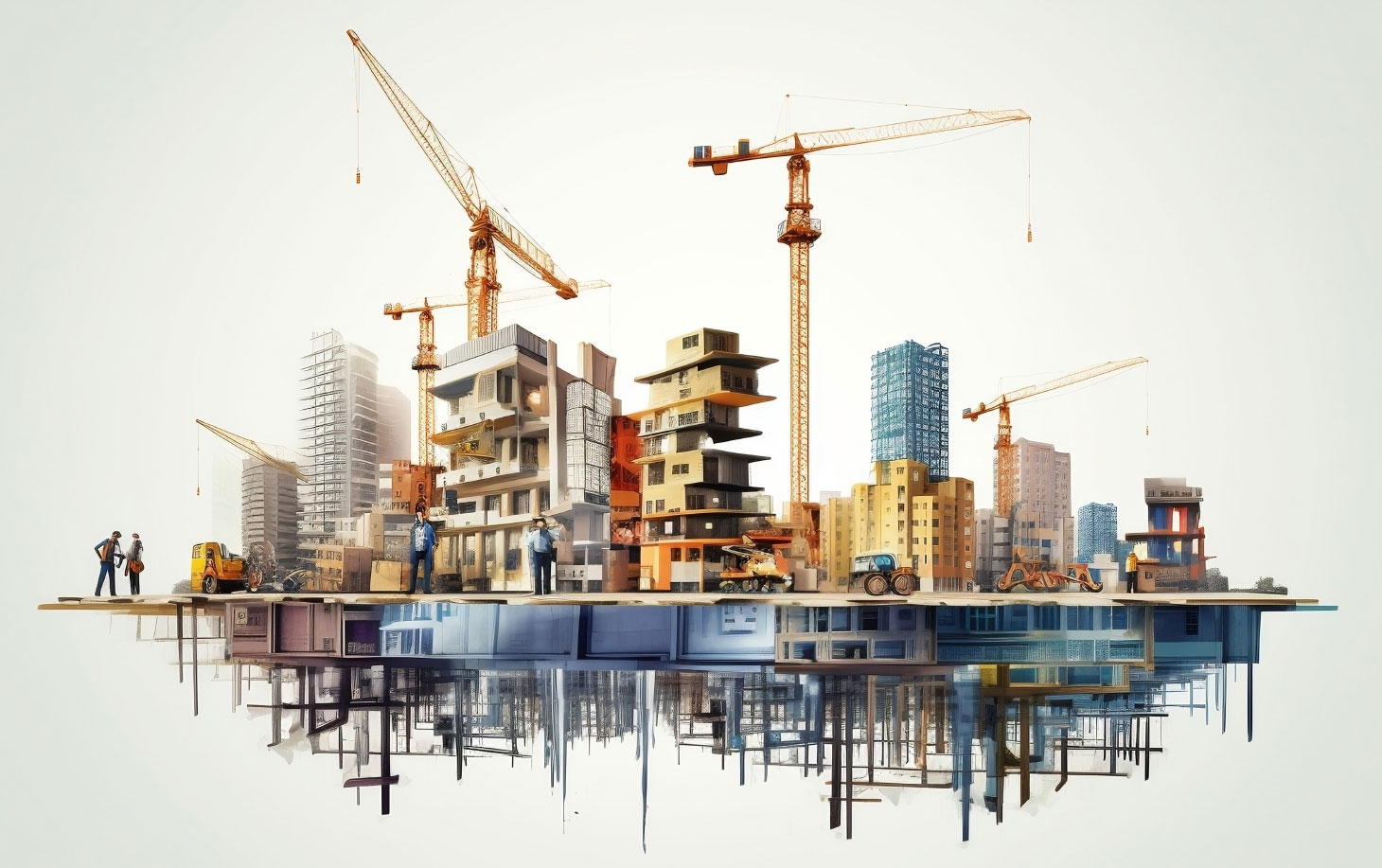
With the start of 2024, Procore is tracking developments across the industry, including new technology, project backlogs, labour shortages and approaches toward mental health in construction.
This is a critical time for the industry, with new challenges and opportunities for companies to be nimble. Understanding what lies ahead can help organizations prepare and ensure their processes are in line with the rest of the industry, which will position them for success.

Risk management will be a priority, leading to more available data
In 2023, tens of billions of dollars were wasted in the construction industry resulting from inefficiencies, led by the lack of risk management software. More organizations will look for a platform that can connect their construction data, structure that data and glean insights to help reduce risks on future projects. As more organizations adopt risk management technology, industry will see more Internet of Things (IoT) sensors on equipment and more wearables on the jobsite collecting data, which can then be connected to the risk management platform.
Artificial intelligence (AI) will be broadly implemented by construction companies
With more organizations implementing risk management technologies and an increase in data being collected in the industry overall (from people, equipment and IoT devices), more organizations will begin to embrace AI. Companies are starting to change the way they work, with less resistance to technology. With all the data being collected, the foundation to adopt AI will be in place.
However, companies need to be mindful that AI and large language models (LLMs) are informed by the data provided. If there’s bias in the data, that can affect output. It will remain necessary to validate answers from AI tools.
Data and AI will help increase efficiency gains
Traditionally, there’s a heavy burden on project teams to complete projects on time and on budget within a set parameter of quality and safety requirements. There’s added pressure to document everything, which can be time consuming. However, in 2024, automation in data collection on construction sites will alleviate those burdens. AI, including computer vision and generative AI, will enable companies to standardize and structure data throughout a project’s lifespan. From design with building information modelling (BIM) to purchasing materials and validating insurance information, AI will streamline data processes. This is not just about doing more with less, it’s about seeing around the bend and course correcting ahead of time.
Augmented reality (AR) and robotics will be more mainstream in construction
While in the past there was limited understanding on how to use AR because it was cost prohibitive and in its early stages, the technology is becoming more mainstream and available – people even have it on their phones. There’s been an increase on the use of AR in construction with more complex hardware.
There’s been an increase on the use of AR in construction with more complex hardware.
Proper setup and accuracy are important for this to be more commonplace and the industry is on that track, with specific hardware being built for AR to improve accuracy. Robotics are becoming more common in construction, with robots put in place to help with repetitive and overnight tasks. And while that’s still cost prohibitive – there is a barrier with cost to entry – adoption will continue to increase as time progresses.
Supply chain and cost issues will continue to loosen, but maybe not for sustainable materials
Supply chain effects of the last few years are starting to ease, which in turn will result in decreased costs for materials. However, if there is a push for net-zero buildings, the demand for green and sustainable materials could be affected due to availability and price.
Construction will do more to track projects’ carbon footprint
It’s well known the construction industry has a large carbon footprint, but new technologies are helping to increase awareness and the ability to determine where pollution is coming from, which will make it easier to measure and manage the problem. While companies around the world are taking sustainability more seriously, Canada can follow Europe, which is leading the charge in that area.
Conversations around mental health in the industry will evolve in the next couple years
More businesses are demonstrating their dedication to caring for their people by investing in the resources required to build holistic safety programs. Conversations about mental health will continue to expand and grow and gain momentum. This will ultimately translate to a total cultural transformation.
Hiring and retaining women and underrepresented groups will be a higher priority
Construction organizations are improving at attracting women and individuals from underrepresented groups into construction, but the challenge has been retaining them. One of the root causes for this retention issue is construction’s traditional lack of flexibility that often doesn’t align well with family obligations. Looking ahead, there will be an increase in career pathing and staggered shifts for individuals who are caregivers, with creative opportunities around how businesses support caregiving, and more hiring of returning mothers as part-time workers. In 2024 and beyond, industry will see more meaningful interactions to create policies that will enable people to work within a timeframe that allows them to better balance their lives.
The labour shortage will continue to have far-reaching effects
The impacts of the chronic labour shortage on construction are all too obvious – there aren’t enough skilled workers to meet demand. However, the lack of workers in the industry doesn’t just delay projects and increase safety risk, it also creates problems beyond construction, increasing prices that affect home buyers and renters. It also prevents the industry from effectively future-proofing infrastructure for climate change and population growth, or even repairing existing aging infrastructure. This means that, in the future, energy security, home buying power, the ability to commute safely to work and more will hinge upon getting more people into construction. It’s essential that everyone – not only the industry – work to attract as many new workers as possible.
Project backlogs will persist in 2024
Canadian civil and infrastructure contractors reported that their backlogs had increased 38 per cent from pre-pandemic levels in the recent Top Civil and Infrastructure Trends Report by Procore and the Associated General Contractors of America. There may be several drivers behind this growth, including increased population fuelled by immigration as well as robust consumer spending, which reached an all-time high in the second quarter of last year.
The push towards green technologies, a need to develop more robust localized supply chains and government investments are additional factors that will continue in 2024.